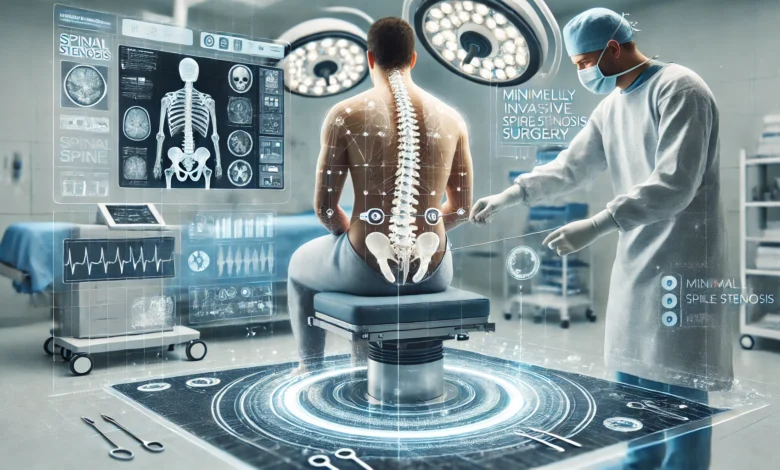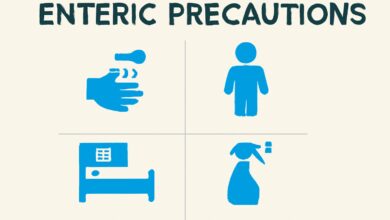What is the Newest Treatment for Spinal Stenosis?
Exploring the Latest Innovations and Options in Spinal Stenosis Care

Spinal stenosis is a common condition that occurs when the spaces within the spine narrow, putting pressure on the spinal cord and nerves. This condition often leads to symptoms such as pain, numbness, and weakness, particularly in the lower back and legs. Fortunately, advancements in medical treatments have made it easier for patients to find relief. In this article, we’ll explore the newest treatments for spinal stenosis, from minimally invasive surgeries to cutting-edge therapies, and provide insight into their benefits, applications, and effectiveness.
Table of Contents
ToggleUnderstanding Spinal Stenosis
Spinal stenosis occurs when the spinal canal narrows, compressing the spinal cord and nerves. This condition can affect different regions of the spine, including the cervical (neck) and lumbar (lower back) areas. The narrowing may be caused by a variety of factors, such as age-related changes, injury, or disease.
Symptoms of spinal stenosis include:
-
Lower back pain
-
Numbness and tingling in the legs
-
Weakness in the legs
-
Difficulty walking or balancing
While traditional treatments for spinal stenosis involve medications, physical therapy, and lifestyle changes, there have been several advancements in surgical options and non-surgical therapies.
Minimally Invasive Surgical Options
Endoscopic Spine Surgery
Endoscopic spine surgery is one of the newest and most effective treatments for spinal stenosis. This minimally invasive procedure involves making small incisions through which a camera and specialized instruments are inserted. Surgeons can view the affected area in real-time and remove tissue or bone that is causing nerve compression.
Benefits of Endoscopic Spine Surgery:
-
Smaller incisions reduce the risk of infection and scarring.
-
Quicker recovery times compared to traditional surgery.
-
Less tissue disruption, leading to less pain post-surgery.
Endoscopic spine surgery can be used for both cervical and lumbar spinal stenosis and is particularly beneficial for patients who want to avoid extensive recovery times.
Vertiflex Superion Implant
The Vertiflex Superion implant is a small titanium device inserted between the vertebrae to provide relief from spinal stenosis. It helps relieve pressure on the nerves by creating space in the spine, allowing patients to experience pain relief without traditional fusion surgery.
Key Benefits:
-
Preserves spinal motion by avoiding the need for fusion surgery.
-
Minimally invasive procedure with a quick recovery time.
-
Effective for lumbar spinal stenosis patients who have not found relief through conservative treatments.
Motion-Preserving Treatments
TOPS System (Total Posterior Spine)
The TOPS System is an FDA-approved spinal implant that allows for motion preservation in patients with spinal stenosis. Unlike traditional spinal fusion surgery, which restricts movement, the TOPS System maintains the spine’s natural flexibility while stabilizing the affected area.
Advantages of the TOPS System:
-
Allows for natural spinal motion, reducing the risk of adjacent segment disease.
-
Improves mobility while providing spinal stability.
-
Preferred by patients who want to avoid spinal fusion.
Interspinous Process Decompression (IPD)
IPD involves the implantation of a device between the spinous processes of the vertebrae to relieve pressure on the nerves. This method is minimally invasive and effective for patients with lumbar spinal stenosis.
Benefits of IPD:
-
Quick recovery due to its minimally invasive nature.
-
Relieves pressure on the spinal nerves, reducing pain and discomfort.
-
Does not involve the need for bone removal, preserving the integrity of the spine.
Emerging Therapies for Spinal Stenosis
MILD® (Minimally Invasive Lumbar Decompression)
MILD® is a minimally invasive procedure that targets the source of pain caused by lumbar spinal stenosis. This technique involves removing tissue or bone fragments from the spine to alleviate pressure on the nerves without the need for large incisions.
Key Benefits of MILD®:
-
Minimal disruption to surrounding tissues.
-
Short recovery times, with many patients returning to regular activities quickly.
-
Ideal for patients with moderate spinal stenosis who want to avoid traditional surgery.
Robotic-Assisted Spinal Fixation
Robotic-assisted spinal fixation is an innovative treatment that improves the precision of spinal surgeries. Using advanced robotics, surgeons can place screws and rods with incredible accuracy, reducing the risk of complications and speeding up recovery times.
Advantages of Robotic-Assisted Fixation:
-
Increased accuracy in screw placement, leading to better outcomes.
-
Minimally invasive, with smaller incisions and reduced blood loss.
-
Faster recovery times compared to traditional spinal surgery.
Non-Surgical Treatments and Complementary Therapies
Acupotomy for Spinal Stenosis
Acupotomy is a treatment that combines acupuncture with surgical techniques. This minimally invasive therapy uses a specialized needle to release tension and remove tissue that causes nerve compression.
Benefits of Acupotomy:
-
Non-invasive with minimal recovery time.
-
Reduces nerve compression, providing pain relief.
-
Helps with both cervical and lumbar stenosis.
Danlu Tongdu Tablets for Lumbar Spinal Stenosis
Danlu Tongdu tablets are a new pharmacological approach for treating lumbar spinal stenosis. These tablets work by reducing inflammation and promoting blood flow to the spine.
Advantages of Danlu Tongdu Tablets:
-
Non-invasive treatment option.
-
Reduces pain and inflammation associated with spinal stenosis.
-
Helps promote healing in the affected area.
Stem Cell Therapy
Stem cell therapy is an exciting new treatment for spinal stenosis that involves injecting stem cells into the affected area of the spine to promote tissue regeneration and reduce inflammation. Although research is still ongoing, stem cell therapy holds promise for treating degenerative spinal conditions.
Benefits of Stem Cell Therapy:
-
Regenerates damaged tissues, potentially healing the spine over time.
-
Reduces inflammation and pain.
-
Long-term pain relief without the need for surgery.
Conclusion
The treatment of spinal stenosis has come a long way in recent years, with various innovative options now available. From endoscopic spine surgery to motion-preserving treatments like the TOPS System, there are numerous ways to alleviate the pain and discomfort caused by spinal stenosis without resorting to traditional, invasive surgeries. Additionally, emerging therapies such as acupotomy and stem cell therapy are providing patients with non-invasive alternatives that could potentially offer long-term relief.
If you or someone you know is suffering from spinal stenosis, it’s essential to consult with a healthcare professional who can help determine the best treatment plan based on the severity of the condition and the patient’s overall health. With the right treatment, most individuals with spinal stenosis can experience significant improvement in their quality of life.
FAQs
1. What are the most common treatments for spinal stenosis?
The most common treatments for spinal stenosis include physical therapy, medications, and in more severe cases, surgery. Surgical options may include endoscopic spine surgery or spinal decompression procedures.
2. How long does recovery take after spinal stenosis surgery?
Recovery times vary depending on the type of surgery, but minimally invasive procedures like endoscopic spine surgery often allow patients to return to normal activities within a few weeks.
3. Can stem cell therapy cure spinal stenosis?
While stem cell therapy is still under investigation, it shows promise in reducing inflammation and regenerating damaged tissues in the spine. More research is needed to fully understand its effectiveness.
4. Is spinal stenosis surgery always necessary?
Surgery is not always necessary for spinal stenosis. Many patients find relief with conservative treatments like physical therapy, epidural steroid injections, and pain medications.
5. What is the best non-surgical treatment for spinal stenosis?
MILD® (Minimally Invasive Lumbar Decompression) and acupotomy are some of the best non-surgical treatments for spinal stenosis, providing relief without the need for extensive procedures.



